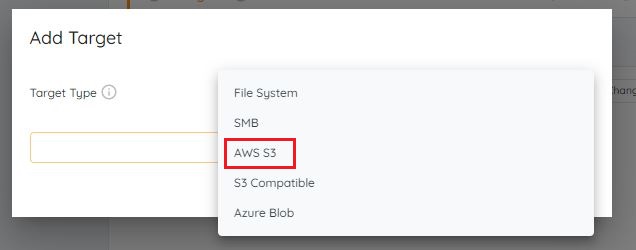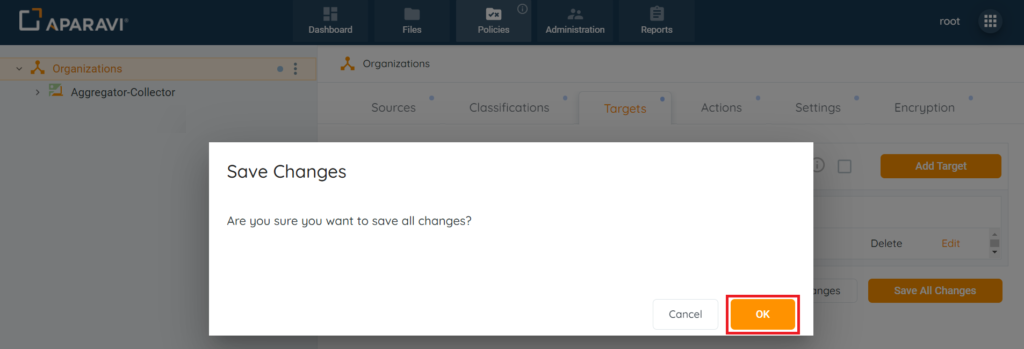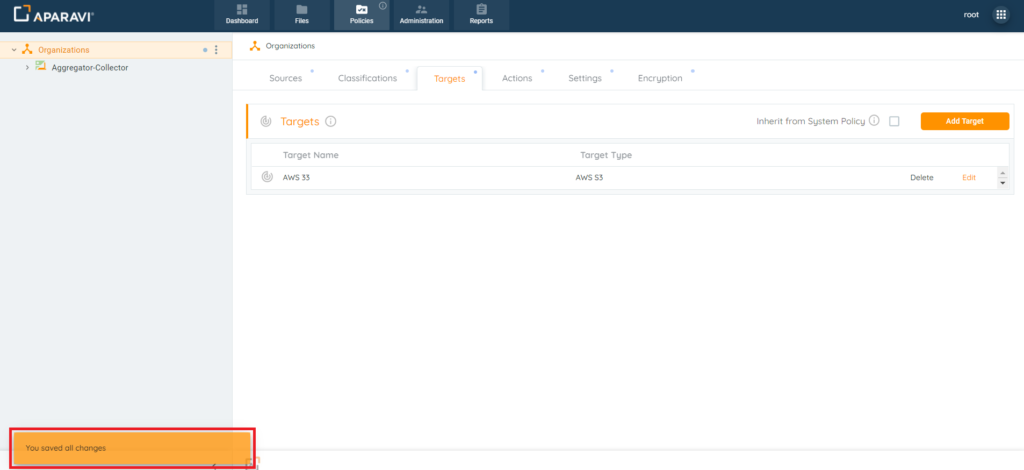How Can We Help?
Search for answers or browse our knowledge base.
Configuring AWS S3 Target Service
Purpose
Aparavi allows business users to automate data actions by linking sources and targets, no code or command line necessary.
Creating targets allows the system to direct data into pre-configured data services. This enables businesses to build custom workflows for data hygiene, compliance, and retention use cases.
Once the target service has been set up, copy actions can also be configured to run in the background and copy the files from the source to the target service.
Please Note: FAT32 file systems, removable and mounted drives cannot be configured as a target service at this time.
Configuring an AWS S3 Target Service
The platform allows for all nodes to inherit identical settings for the Targets subtab. If the various nodes should have their own set of specifications instead, disabling this feature is also available.
- Click on the Policies tab, located in the top navigation menu.

2. Click on the Targets subtab.

3. Click on the Add Target button, located in the upper right-hand corner of the screen. Once this button is clicked, the Add Target pop-up box will appear.

4. Inside of the Add Target pop-up box, select the AWS S3 option listed from the drop-down menu that appears under the Target Type field.

Target Service Options for use with AWS S3 Bucket
This section describes all required fields to complete in order to implement the Target Service for the AWS S3 bucket.
- Select Target Type “AWS S3”

Please Note: You will find the information for the “Access Key” in your AWS Management Console.
- First, go to “Security credentials”

- Choose “Access keys”

- Create New Access Key

- Download your Access and Security Keys and use them as required in the Aparavi Presentation Layer.

- Create a new Bucket in your S3 environment. After, input the bucket name and the AWS region into the corresponding fields located under the Presentation Layer.

2. Click the “Validate” Button located at the bottom of the “Add Target” pop-up box.

3. Once completed, click the “Validate” button located at the bottom of the “Add Target” pop-up box.
If Validation is Successful: The system will display a green success message along the bottom of the Add Target pop-up box.
If Validation is Not Successful: The system will display a red error message along the bottom of the Add Target pop-up box. Please check the fields for errors and make necessary corrections.

4. Click on the Save All Changes button, located on the bottom right-hand side of the screen.

5. Once clicked, the Save Changes pop-up box will appear. Click the “OK” button located in the bottom right-hand side of the pop-up box.

Once all changes have been successfully saved, the AWS S3 target service will appear as an entry under the Targets sub-tab. Also, an alert message will display in the bottom left-hand corner to indicate that the target service has been successfully configured.

Now that the target service has been configured, click on the Actions subtab and create a copy action. Once completed the system will transmit all [.dat] files matching the copy action query to the AWS S3 target service.
Target Service Links
- Target Inheritance Policy
- Configuring File System Target Service
- Configuring Azure Blob Target Service
- Configuring SMB Target Service
- Configuring S3 Compatible Target Service
- Editing a Target Service
- Deleting a Target Service